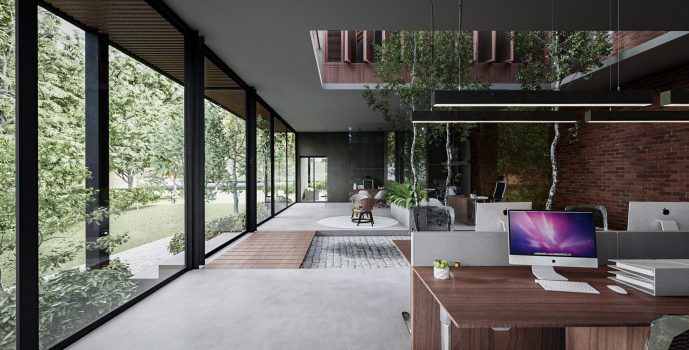The Biophilia Hypothesis is a concept that suggests humans possess an innate affinity for the natural world. It proposes that people evolved in nature and are biologically wired to seek out environments with certain features, such as landscapes with water sources or vegetation.
It further poses that this built-in connection to nature has far-reaching effects on humans’ physical and psychological health. It makes sense, then, to see such theories manifesting in modern architectural design. Yvonne McCormack, RBA’s BIM Lead, takes a closer look at the origins of this concept, and leading examples in modern architecture.
What are the definitions and benefits of biophilic design?
Biophilic design is a practice that seeks to create healthier, more productive and aesthetically pleasing indoor environments by integrating natural elements into building designs. Its benefits include reducing stress, improving physical health outcomes, increasing productivity and creativity, boosting moods, and enhancing cognitive functioning.
The connection between the Circadian rhythm and biophilia has been studied extensively. This connection is based on the idea that humans have an elemental need to be in sync with their biological clock, and experience a meaningful connection to nature.
Studies indicate that when people are exposed to natural light, they report higher levels of well-being, improved focus, and increased productivity. Research suggests that by creating environments incorporating biophilic design elements — such as natural lighting, vegetation, or sounds from nature — people become calmer and more relaxed.
The history and development of biophilic design
Early examples of biophilic design can be seen throughout history in nature-oriented architecture. Ancient civilisations — such as the Egyptians and Greeks — used pillars and other elements to evoke a feeling of nature, while more modern examples include gardens, terraces, urban parks, green roofs or walls into their shapes and sizes.
For example, Frank Lloyd Wright’s Fallingwater in rural Pennsylvania is an iconic example which features an elevated cantilever house that appears to emerge from a waterfall. Similarly, Richard Neutra’s Kaufmann House also utilises exposed concrete walls combined with strategically placed windows to create natural light without sacrificing privacy.
Elsewhere, incorporating biophilic design into hospital settings has proven to shorten patient recovery times. Florence Nightingale was the pioneering nurse who recognised the importance of natural elements in healthcare settings for healing.
She designed hospitals with large windows for natural light and green gardens for fresh air; while also introducing plants into hospital rooms so patients could feel surrounded by nature, even indoors.
By designing spaces based on theories of biophilia and connecting with something larger than ourselves, humans can benefit from improved mental well-being, which is essential for overall health and happiness. Something we’re taking a closer look at in the next blog in this series.
For now, if you’d like to find out more about this topic, drop us a note here.








